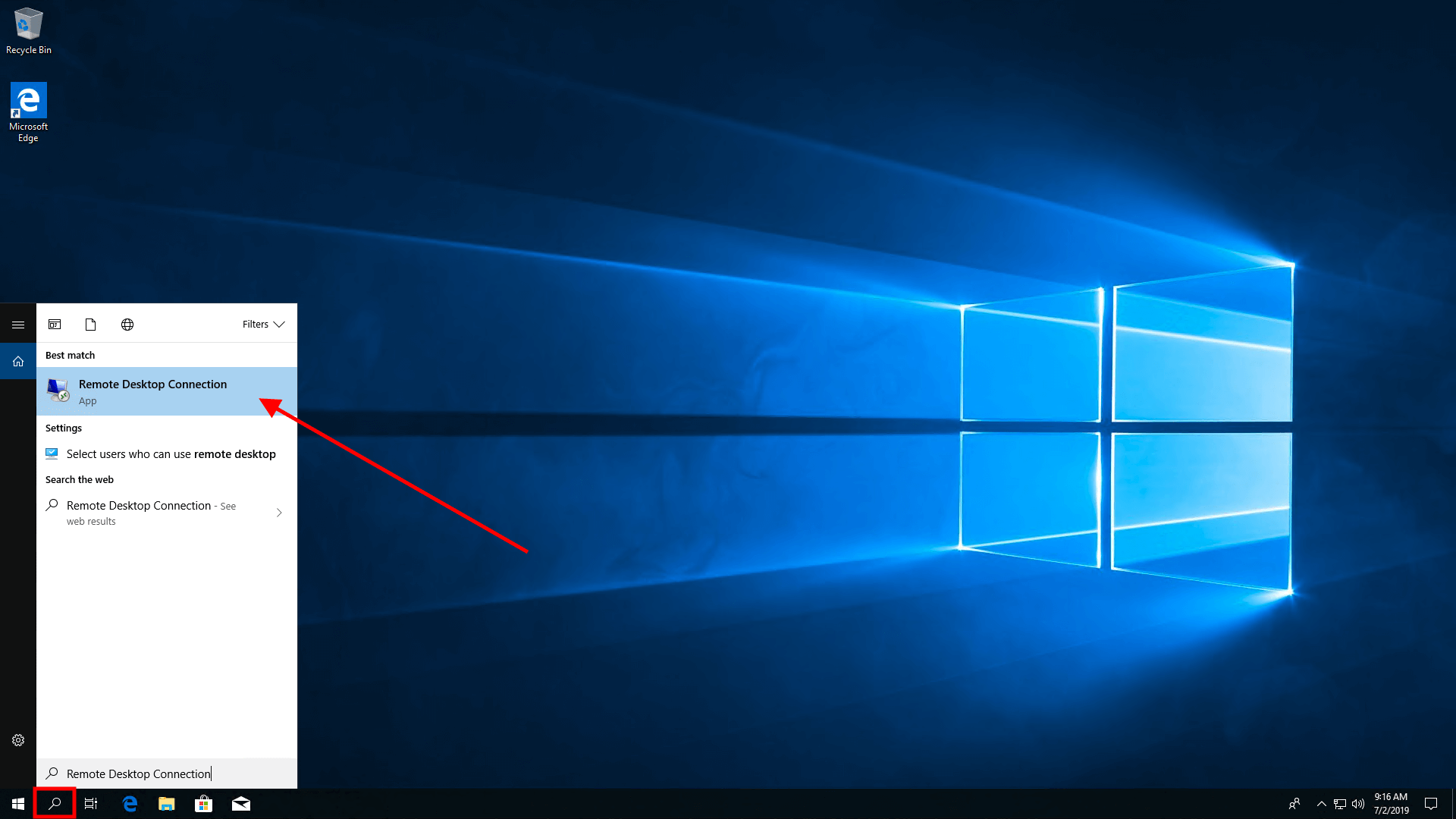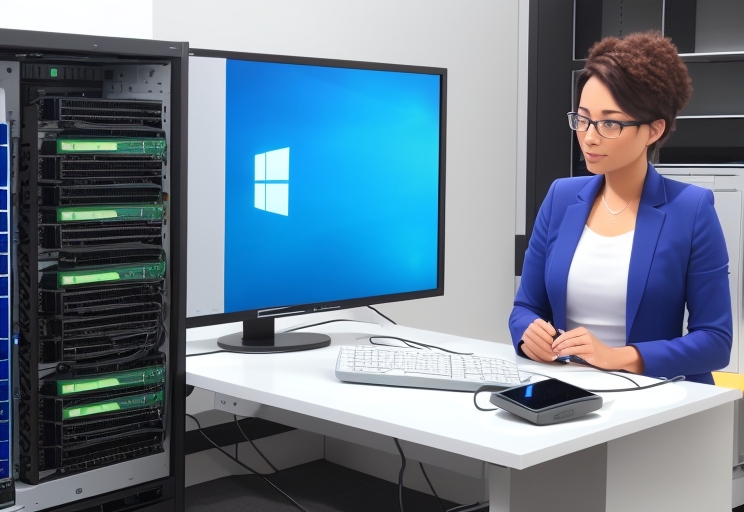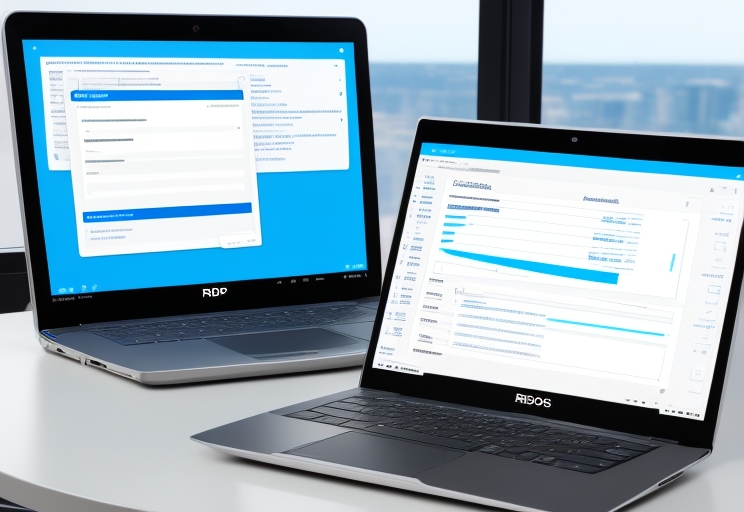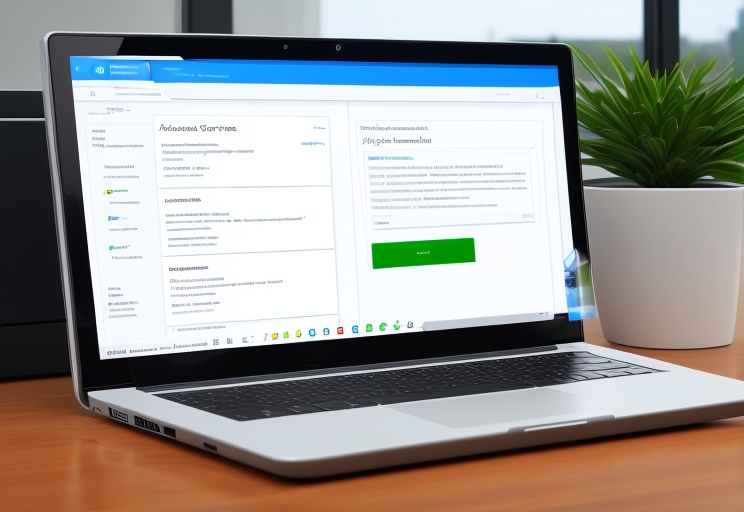
The Power of Remote Access: Windows Server RDP Explained
In today’s fast-paced world, remote access has become a necessity for businesses to stay competitive. With the rise of cloud computing and the need for employees to work from anywhere, anytime, remote access has become a game-changer. One of the most popular remote access solutions is Windows Server Remote Desktop Protocol (RDP). RDP allows users to access their Windows desktops and applications from anywhere in the world, as long as they have an internet connection. This technology has revolutionized the way businesses operate, enabling them to be more flexible, efficient, and productive. In this blog, we will explore the power of remote access and how Windows Server RDP works. We will also discuss the benefits of using RDP and how it can help businesses of all sizes. So, sit back, relax, and let’s dive into the world of remote access and RDP.
Article topics:
- Maximizing Productivity with Windows Server RDP: A Comprehensive Guide
- The Benefits of Windows Server RDP for Remote Work
- How to Set Up Windows Server RDP for Secure Remote Access
- Windows Server RDP vs. VPN: Which is Better for Remote Access?
- The Future of Remote Work: Windows Server RDP and Beyond
- Windows Server RDP for Small Business: Cost-Effective Remote Access Solutions
- The Security Advantages of Windows Server RDP for Remote Access
- Windows Server RDP for IT Professionals: Tips and Tricks for Optimal Performance
- The Role of Windows Server RDP in Disaster Recovery and Business Continuity
- Windows Server RDP for Collaboration: Enhancing Teamwork in a Remote Environment

Maximizing Productivity with Windows Server RDP: A Comprehensive Guide
Windows Server RDP is a powerful tool that can help businesses maximize their productivity. With its comprehensive features and capabilities, it allows users to access their workstations and applications from anywhere in the world. This means that employees can work remotely, collaborate with colleagues, and stay productive even when they are away from the office.
One of the key benefits of Windows Server RDP is its ability to centralize resources. By hosting applications and data on a central server, businesses can reduce the need for expensive hardware and software. This not only saves money but also makes it easier to manage and maintain IT infrastructure.
Another advantage of Windows Server RDP is its security features. With built-in encryption and authentication protocols, it provides a secure connection between remote users and the server. This ensures that sensitive data and information are protected from unauthorized access and cyber threats.
To maximize productivity with Windows Server RDP, it is important to choose the right hardware and software. This includes selecting a server that can handle the workload and choosing applications that are optimized for remote access. It is also important to configure the server and network settings properly to ensure optimal performance and security.
In addition, businesses should provide training and support to their employees to ensure that they are using Windows Server RDP effectively. This includes teaching them how to access and use applications, how to troubleshoot common issues, and how to stay secure while working remotely.
Overall, Windows Server RDP is a powerful tool that can help businesses maximize their productivity. By centralizing resources, providing secure remote access, and optimizing hardware and software, it can help businesses stay competitive and efficient in today’s fast-paced business environment.
The Benefits of Windows Server RDP for Remote Work
In today’s fast-paced world, remote work has become a necessity for many businesses. With the help of Windows Server RDP, remote work has become more efficient and secure than ever before. Windows Server RDP allows users to access their work desktops from anywhere in the world, as long as they have an internet connection.
One of the biggest benefits of Windows Server RDP is that it allows businesses to save money on hardware and software costs. Instead of having to purchase expensive laptops or desktops for each employee, businesses can simply provide them with access to their work desktops through Windows Server RDP. This not only saves money but also ensures that all employees are using the same software and hardware, which can improve productivity and collaboration.
Another benefit of Windows Server RDP is that it provides a secure way for employees to access their work desktops. With Windows Server RDP, all data is encrypted, which means that sensitive information is protected from hackers and other cyber threats. This is especially important for businesses that deal with confidential information, such as financial institutions or healthcare providers.
Windows Server RDP also allows for easy collaboration between employees. With the ability to access their work desktops from anywhere, employees can easily share files and work on projects together, even if they are in different locations. This can improve productivity and help businesses to stay competitive in today’s fast-paced market.
In conclusion, Windows Server RDP is a powerful tool that can help businesses to save money, improve security, and increase productivity. By providing employees with access to their work desktops from anywhere in the world, businesses can stay competitive and adapt to the changing needs of the modern workforce.
How to Set Up Windows Server RDP for Secure Remote Access

Remote Desktop Protocol (RDP) is a powerful tool that allows you to access your Windows Server from anywhere in the world. However, it’s important to set up RDP securely to prevent unauthorized access to your server. In this blog post, we’ll walk you through the steps to set up Windows Server RDP for secure remote access.
Step 1: Enable RDP on your Windows Server
To enable RDP on your Windows Server, go to the Control Panel and click on System and Security. From there, click on System and then click on Remote Settings. In the Remote tab, select the option to allow remote connections to this computer.
Step 2: Configure your Firewall
To ensure that your server is secure, you need to configure your firewall to allow RDP traffic. You can do this by opening the Windows Firewall with Advanced Security and creating a new inbound rule for RDP traffic.
Step 3: Set up SSL/TLS Encryption
To ensure that your RDP traffic is encrypted, you need to set up SSL/TLS encryption. This can be done by installing an SSL/TLS certificate on your server and configuring RDP to use it.
Step 4: Use Strong Passwords
To prevent unauthorized access to your server, it’s important to use strong passwords for your RDP connections. Make sure to use a combination of uppercase and lowercase letters, numbers, and special characters.
By following these steps, you can set up Windows Server RDP for secure remote access. Remember to always keep your server up to date with the latest security patches and to monitor your server for any suspicious activity.
Windows Server RDP vs. VPN: Which is Better for Remote Access?
When it comes to remote access, there are two popular options: Windows Server RDP and VPN. Both have their own advantages and disadvantages, and choosing the right one depends on your specific needs.
Windows Server RDP, or Remote Desktop Protocol, allows users to remotely access a Windows desktop or server. It is a built-in feature of Windows Server and is easy to set up and use. With RDP, users can access their desktops and applications from anywhere with an internet connection. However, RDP is not as secure as VPN and can be vulnerable to attacks if not properly configured.
On the other hand, VPN, or Virtual Private Network, creates a secure connection between the user and the network. It encrypts all data transmitted between the user and the network, making it more secure than RDP. VPN is also more versatile than RDP, as it can be used to access any network resource, not just a specific desktop or server.
So, which is better for remote access? It depends on your specific needs. If you only need to access a specific desktop or server, and security is not a major concern, then Windows Server RDP may be the better option. However, if you need to access multiple network resources and security is a top priority, then VPN is the way to go.
In conclusion, both Windows Server RDP and VPN have their own advantages and disadvantages. Choosing the right one depends on your specific needs and priorities. Regardless of which option you choose, it is important to properly configure and secure your remote access to ensure the safety of your network and data.
The Future of Remote Work: Windows Server RDP and Beyond
The future of remote work is looking brighter than ever, thanks to advancements in technology like Windows Server RDP. With the ability to access your work computer from anywhere in the world, remote work has become more convenient and efficient than ever before. But what does the future hold for this technology?
One possibility is the integration of virtual and augmented reality into remote work. Imagine being able to attend a virtual meeting with colleagues from around the world, all while feeling like you’re in the same room. This technology could revolutionize the way we work remotely, making it feel more like an in-person experience.
Another potential development is the use of artificial intelligence to streamline remote work processes. With AI, tasks like scheduling meetings and organizing files could be automated, freeing up more time for employees to focus on their core responsibilities.
Overall, the future of remote work is bright, and Windows Server RDP is just the beginning. As technology continues to evolve, we can expect even more exciting developments that will make remote work even more accessible and efficient.
Windows Server RDP for Small Business: Cost-Effective Remote Access Solutions
Small businesses often struggle with the cost of implementing remote access solutions. However, with Windows Server RDP, small businesses can now enjoy cost-effective remote access solutions. Windows Server RDP allows businesses to access their servers remotely, enabling employees to work from anywhere, at any time. This means that businesses can save on office space and other overhead costs, while still maintaining productivity levels.
Windows Server RDP is a secure and reliable solution that allows businesses to access their servers remotely without compromising on security. With Windows Server RDP, businesses can set up secure connections that are encrypted, ensuring that data is protected from unauthorized access. This means that businesses can enjoy peace of mind knowing that their data is safe and secure.
In addition to being cost-effective and secure, Windows Server RDP is also easy to use. Businesses can easily set up remote access solutions using Windows Server RDP, without the need for any additional hardware or software. This means that businesses can get up and running quickly, without any additional costs or delays.
Overall, Windows Server RDP is a cost-effective remote access solution that is perfect for small businesses. With its security, reliability, and ease of use, Windows Server RDP is the ideal solution for businesses looking to save on costs while still maintaining productivity levels. So, if you’re a small business looking for a remote access solution, consider Windows Server RDP.
The Security Advantages of Windows Server RDP for Remote Access
Remote access has become an essential part of modern business operations. With the rise of remote work, companies need to ensure that their employees can access company resources from anywhere, at any time. Windows Server RDP (Remote Desktop Protocol) is a powerful tool that allows users to remotely access their Windows Server desktops and applications.
One of the biggest advantages of using Windows Server RDP for remote access is security. Windows Server RDP provides a secure connection between the user’s device and the server, ensuring that sensitive data is protected from unauthorized access. The protocol uses encryption to secure the connection, making it difficult for hackers to intercept and steal data.
Another security advantage of Windows Server RDP is that it allows administrators to control access to resources. Administrators can set up user accounts with specific permissions, ensuring that only authorized users can access sensitive data. This helps to prevent data breaches and other security incidents.
Windows Server RDP also provides a range of security features that can be customized to meet the needs of different organizations. For example, administrators can set up two-factor authentication to add an extra layer of security to the remote access process. They can also set up firewalls and other security measures to protect against external threats.
In addition to security, Windows Server RDP offers a range of other benefits for remote access. It allows users to access their desktops and applications from anywhere, at any time, making it easier to work remotely. It also provides a consistent user experience across different devices, ensuring that users can work efficiently and effectively.
Overall, Windows Server RDP is a powerful tool for remote access that offers a range of security advantages. By using this protocol, organizations can ensure that their sensitive data is protected from unauthorized access, while also providing their employees with the flexibility and convenience of remote access.
Windows Server RDP for IT Professionals: Tips and Tricks for Optimal Performance
As an IT professional, you know that remote desktop protocol (RDP) is a crucial tool for managing Windows servers. However, getting optimal performance from RDP can be a challenge. In this blog, we’ll share some tips and tricks to help you get the most out of Windows Server RDP.
First, make sure you’re using the latest version of RDP. Microsoft regularly releases updates that improve performance and security. You can download the latest version from the Microsoft website.
Next, optimize your network settings. RDP performance is heavily dependent on network speed and latency. To minimize latency, use a wired connection instead of Wi-Fi. You can also adjust the RDP settings to use less bandwidth, which can improve performance on slower networks.
Another tip is to use RemoteFX. This technology uses hardware acceleration to improve the performance of graphics-intensive applications. To enable RemoteFX, you’ll need a compatible graphics card and the appropriate drivers.
Finally, consider using a remote desktop gateway (RD Gateway). This allows you to securely connect to your Windows Server RDP session from outside your organization’s network. RD Gateway also provides additional security features, such as two-factor authentication.
By following these tips and tricks, you can optimize your Windows Server RDP performance and make your job as an IT professional easier.
The Role of Windows Server RDP in Disaster Recovery and Business Continuity
In today’s fast-paced business environment, disaster recovery and business continuity planning have become essential for organizations of all sizes. Windows Server RDP plays a crucial role in ensuring that businesses can continue to operate even in the face of unexpected disruptions.
Windows Server RDP, or Remote Desktop Protocol, allows users to access their desktops and applications from anywhere, at any time. This means that even if a disaster strikes and employees are unable to physically access their office, they can still work remotely using their Windows Server RDP connection.
In addition to providing remote access, Windows Server RDP also allows for centralized management of desktops and applications. This means that IT administrators can quickly and easily deploy updates and patches to all connected devices, ensuring that they are always up-to-date and secure.
Furthermore, Windows Server RDP can be used to create virtual desktops, which can be quickly spun up in the event of a disaster. This means that even if an organization’s physical infrastructure is damaged or destroyed, employees can still access their virtual desktops and continue working.
Overall, Windows Server RDP is an essential tool for disaster recovery and business continuity planning. By providing remote access, centralized management, and virtual desktop capabilities, it ensures that businesses can continue to operate even in the face of unexpected disruptions.
Windows Server RDP for Collaboration: Enhancing Teamwork in a Remote Environment
In today’s fast-paced business world, remote work has become a norm. With the rise of globalization, companies are expanding their operations across borders, and remote work has become a necessity. However, remote work comes with its own set of challenges, especially when it comes to collaboration. Windows Server RDP is a powerful tool that can help enhance teamwork in a remote environment.
Windows Server RDP allows remote access to a server, which means that team members can access the same files and applications from anywhere in the world. This means that team members can collaborate on projects in real-time, regardless of their location. With Windows Server RDP, team members can work together on a project, share ideas, and make changes in real-time.
Windows Server RDP also provides a secure environment for collaboration. With Windows Server RDP, team members can access files and applications securely, without the risk of data breaches. This means that team members can collaborate on sensitive projects without worrying about the security of their data.
In addition to enhancing collaboration, Windows Server RDP also provides a cost-effective solution for remote work. With Windows Server RDP, companies can save money on hardware and software costs, as team members can access the same files and applications from a remote location.
In conclusion, Windows Server RDP is a powerful tool that can enhance teamwork in a remote environment. With its real-time collaboration features, secure environment, and cost-effective solution, Windows Server RDP is a must-have for any company that wants to succeed in today’s global business world.

Conclusion
In conclusion, the power of remote access through Windows Server RDP cannot be overstated. It allows businesses to operate more efficiently and effectively by enabling employees to work from anywhere, at any time. This flexibility not only increases productivity but also improves work-life balance for employees. Additionally, remote access through RDP provides a secure way to access company resources, reducing the risk of data breaches and cyber attacks. With the increasing trend of remote work, Windows Server RDP is becoming an essential tool for businesses of all sizes. It is a cost-effective solution that offers numerous benefits, including increased productivity, improved work-life balance, and enhanced security. As technology continues to evolve, remote access through RDP will only become more important, and businesses that embrace it will have a competitive advantage in the marketplace.

This article incorporates information and material from various online sources. We acknowledge and appreciate the work of all original authors, publishers, and websites. While every effort has been made to appropriately credit the source material, any unintentional oversight or omission does not constitute a copyright infringement. All trademarks, logos, and images mentioned are the property of their respective owners. If you believe that any content used in this article infringes upon your copyright, please contact us immediately for review and prompt action.
This article is intended for informational and educational purposes only and does not infringe on the rights of the copyright owners. If any copyrighted material has been used without proper credit or in violation of copyright laws, it is unintentional and we will rectify it promptly upon notification. Please note that the republishing, redistribution, or reproduction of part or all of the contents in any form is prohibited without express written permission from the author and website owner. For permissions or further inquiries, please contact us.


